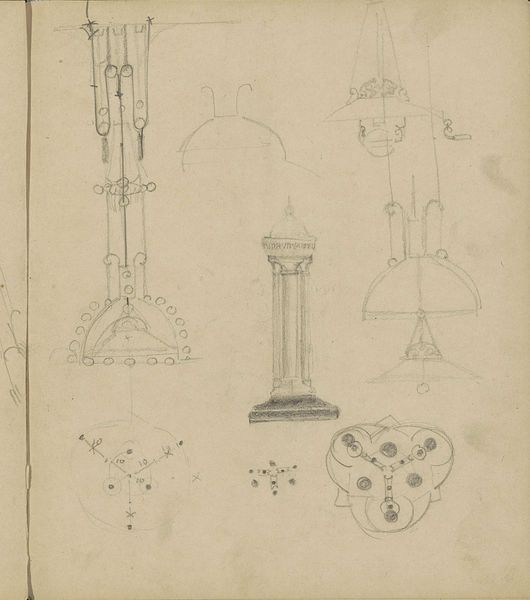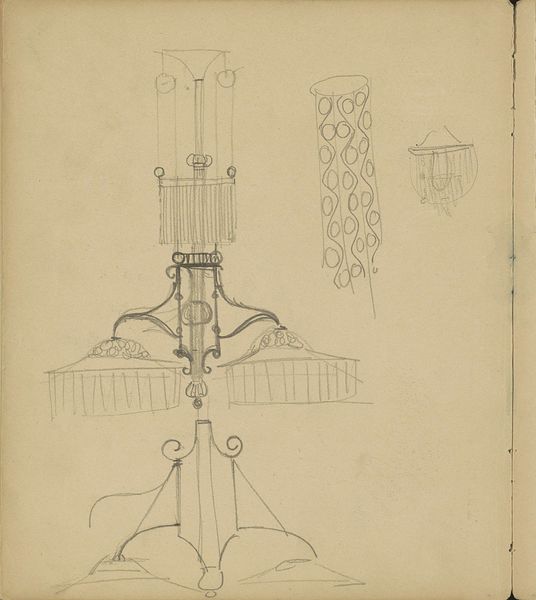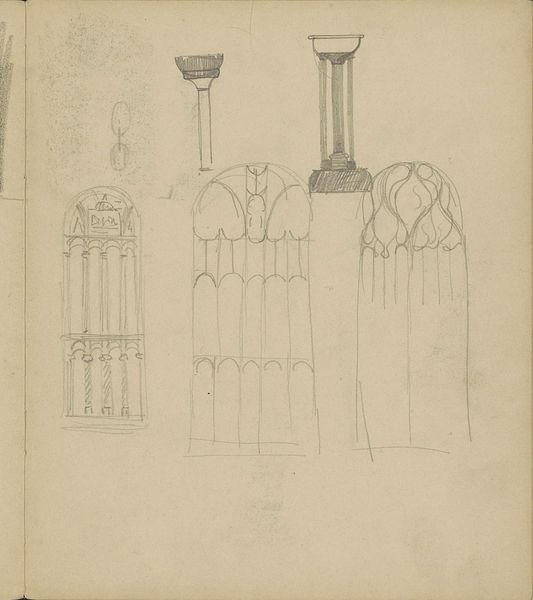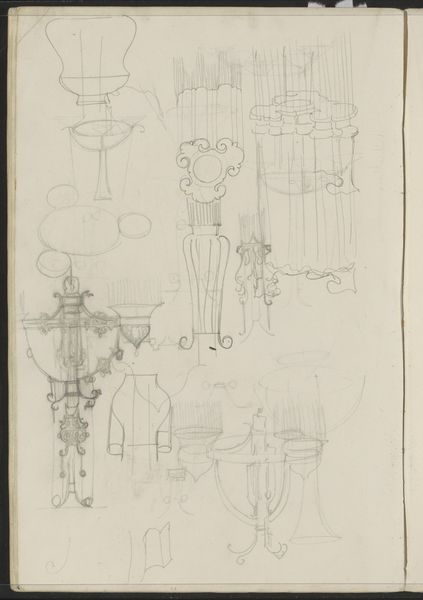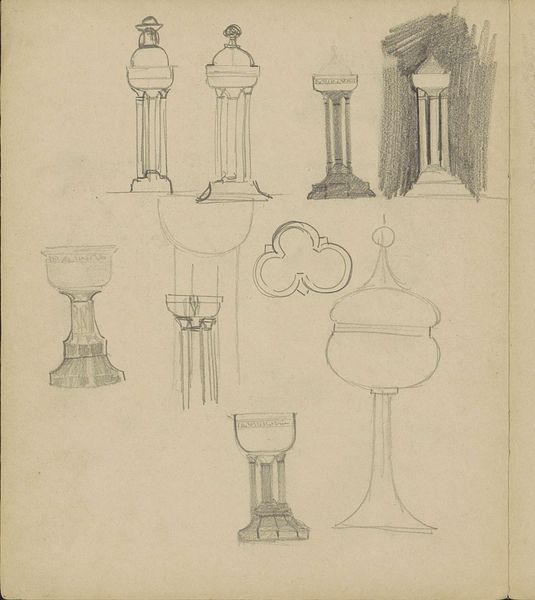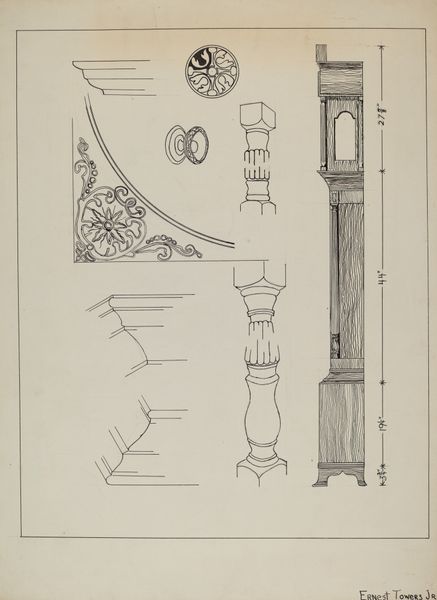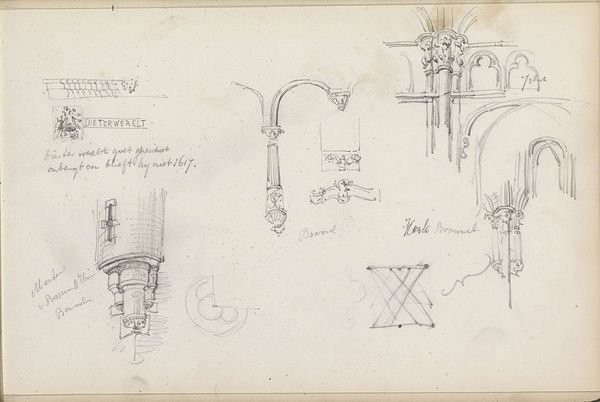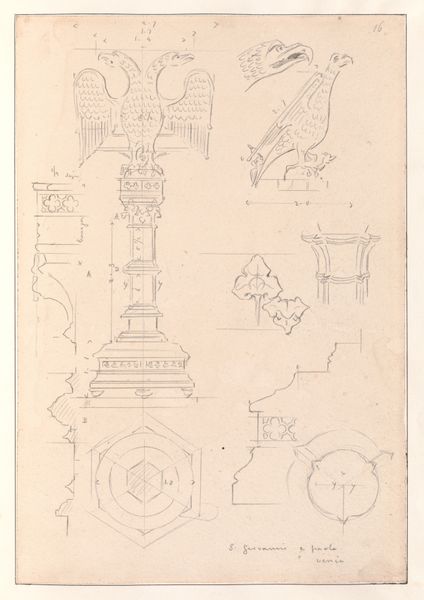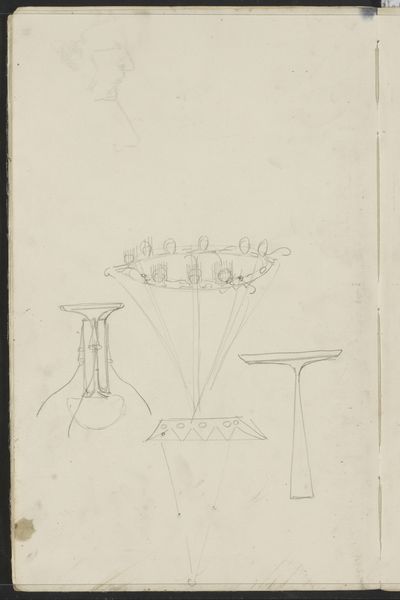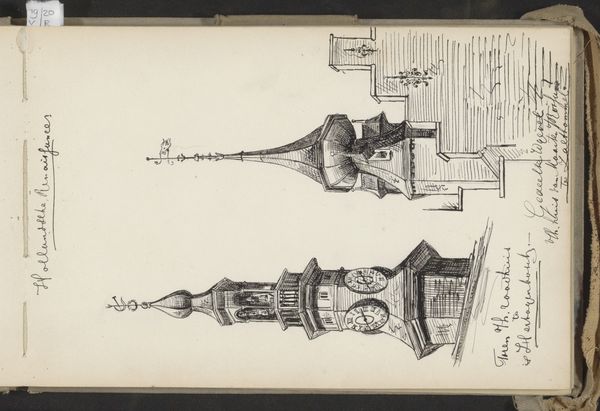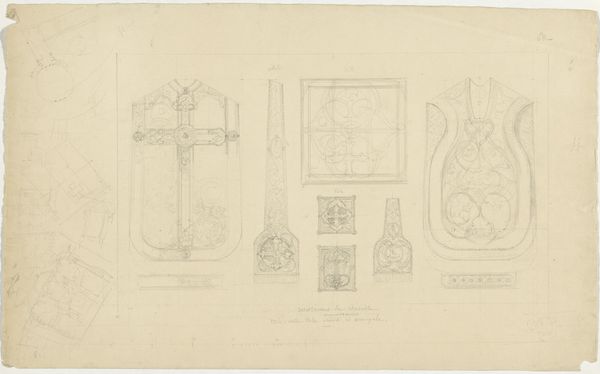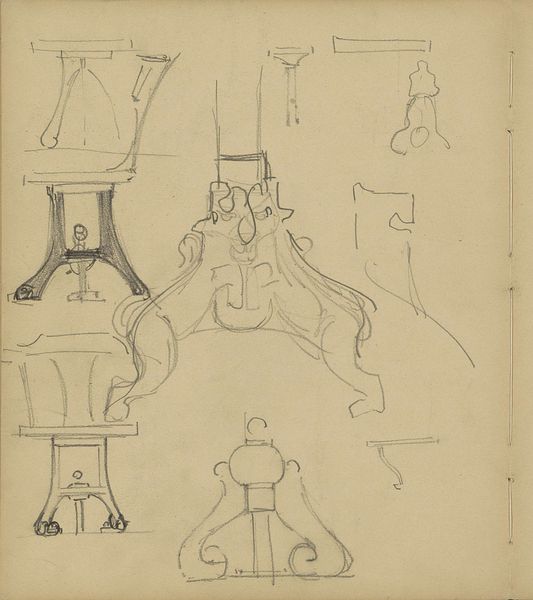
#
aged paper
#
quirky sketch
#
sketch book
#
personal sketchbook
#
idea generation sketch
#
sketchwork
#
sketchbook drawing
#
storyboard and sketchbook work
#
sketchbook art
#
initial sketch
Copyright: Rijks Museum: Open Domain
Editor: Here we have "Ontwerpen voor lampen en elektrische kachels," or "Designs for lamps and electric heaters," from around 1906 by Carel Adolph Lion Cachet, housed at the Rijksmuseum. It looks like it’s a page torn from a sketchbook. I’m immediately struck by how technical, but also fanciful, these designs seem. They feel very "turn of the century." What do you see when you look at this piece? Curator: I see a fascinating document of a pivotal moment in domestic life and the democratization of comfort. Electricity was transforming homes, but lighting design was still catching up. The drawing itself speaks to a society grappling with technological advancement and its aesthetic implications. Editor: How so? Curator: Notice how the designs blend the new technology with traditional forms. The hanging lamps still evoke gaslight fixtures. Consider the social context – electricity was initially a luxury, so these designs would have been for wealthy patrons eager to display their modernity, but within familiar aesthetic codes. Who was being illuminated and who could afford that illumination becomes the real subject of the piece. Does that reading resonate? Editor: Absolutely! It's a glimpse into the aspirations of a specific social class at that time. So the design isn’t just about function, but about status, too. I’m starting to understand the politics of imagery you mentioned! Curator: Precisely. And the very act of sketching – that private, generative process – hints at the artist's own negotiation of tradition and progress within a rapidly changing world. Editor: This gives me so much to think about—how art is never just about art; it always reflects its time and the people who make and use it! Thanks for unpacking this with me!
Comments
No comments
Be the first to comment and join the conversation on the ultimate creative platform.

